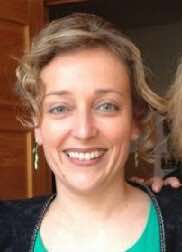
Marta Fernández Vázquez
Dpto. Educación
31080 Universidad de Navarra
mafvazquez@unav.es
website

|
Marta Fernández Vázquez Dpto. Educación 31080 Universidad de Navarra mafvazquez@unav.es website |

|
Gerardo Aguado Alonso Dpto. Educación 31080 Universidad de Navarra gaguado@unav.es website |
| Participants: | 47 children -- ages 3;0, 3;6, and 4;0 |
| Type of Study: | longitudinal |
| Location: | Spain |
| Media type: | Marta will digitize VHS |
| DOI: | doi:10.21415/T5MK75 |
This is a longitudinal study of the normal language development of 50 Spanish children from age 3 to 4. Children were observed at 3;0, 3;6, and 4;0 and videotaped in these three interactions:
The study was conducted in Pamplona in the children’s schools and homes. The data were used for a doctoral thesis on the development of morphosyntax during this period.
Files names begin with the three letter code for the child. Then comes the three-letter code for the month and then the year. If there is no further extension, this is the mother-child situation. If there is a “b”, the situation is with child-child play. If there is an “n”, then the file gives the narration. Data were collected from six different schools.
Basque forms in the transcripts include: escalerabat escalera, egunon buenos días, zaspi siete, ardias ovejas, gela clase, kaixo hola, musua un beso, neska nina, ninia niño, chimbeletas mariposas, pimpiripausas mariposas, chirula flauta, cuto cerdo, zorionak cupleaños, gorria rojo. The transcripts also include the Catalan word “chocholo” (loco) and the English works “Daddy” and “orange.”